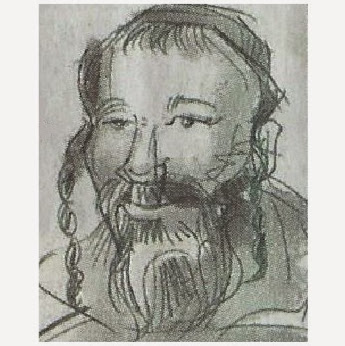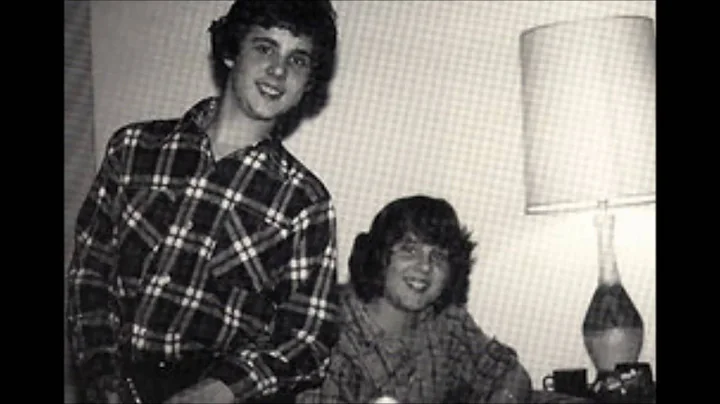David M Weimer
age ~68
from Aberdeen, NJ
- Also known as:
-
- Dave M Weimer
- David M Weiner
- Phone and address:
-
16 Imbrook Ln, Matawan, NJ 07747
7326731752
David Weimer Phones & Addresses
- 16 Imbrook Ln, Matawan, NJ 07747 • 7326731752
- Aberdeen, NJ
- New Providence, NJ
- Berkeley Heights, NJ
- New York, NY
Work
-
Company:Kramer & Frank, P.C.
-
Address:
Specialities
Litigation • Mediation • Bankruptcy & Debt • Personal Injury • Fair Debt Collection Practices Act • Fair Credit Reporting Act • Creditors Rights
Lawyers & Attorneys

David Weimer - Lawyer
view sourceOffice:
Kramer & Frank, P.C.
Specialties:
Litigation
Mediation
Bankruptcy & Debt
Personal Injury
Fair Debt Collection Practices Act
Fair Credit Reporting Act
Creditors Rights
Mediation
Bankruptcy & Debt
Personal Injury
Fair Debt Collection Practices Act
Fair Credit Reporting Act
Creditors Rights
ISLN:
902892437
Admitted:
1984
University:
Southwest Missouri State University, B.A., 1980
Law School:
Washington University, J.D., 1983
Isbn (Books And Publications)








Improving Prosecution?: The Inducement and Implementation of Innovations for Prosecution Management
view sourceAuthor
David L. Weimer
ISBN #
0313222479
Resumes

David Weimer
view source
David Weimer
view source
David Weimer
view source
David Weimer
view source
David Weimer
view source
David Weimer
view sourceLocation:
United States

David Weimer
view sourceLocation:
United States
Name / Title
Company / Classification
Phones & Addresses
Weimer and Co. LLC
Attorneys & Lawyers
Attorneys & Lawyers
1790 Town Park Blvd, STE B, Uniontown, OH 44685-7972
3308964500
3308964500
PERFORMANCE FUNDING LTD
WEIMER LAW FIRM, LLC
SUMMIT PRECISION HOLDINGS, LLC
JOSEPH L. FISHER & ASSOCIATES, INC
THE NATELLI GROUP, LTD
DATA PARTNERS, LLC
BRH & ASSOCIATES, LLC
Us Patents
-
Method And Apparatus For Internet Co-Browsing Over Cable Television And Controlled Through Computer Telephony
view source -
US Patent:6425131, Jul 23, 2002
-
Filed:Dec 30, 1998
-
Appl. No.:09/223161
-
Inventors:Evan Stephen Crandall - Basking Ridge NJ
Anders Fernstedt - Hoboken NJ
Steven Lloyd Greenspan - Scotch Plains NJ
David M Weimer - Aberdeen NJ -
Assignee:ATT Corp. - New York NY
-
International Classification:H04N 7173
-
US Classification:725106, 725109, 725112, 725118
-
Abstract:A novel mechanism is disclosed by which a sender can direct information such as an audiovisual signal to a particular recipients audiovisual display device, such as a cable television set and, thereby, share information between the sender and the recipient. In one embodiment of the invention, a calling party originates a telephone call and associates that telephone call with audio-visual information that exists on the callers personal computer or on an Internet server. The called party answers the call, and can tune an associated cable television to the appropriate channel in order to view the audio-visual information. The caller can modify the audio-visual information during the call. Accordingly, the current invention ties together the telephone, cable, and IP networks in a manner that does not require large investments from cable or telephone service providers. In an alternative embodiment of the invention, a called party, such as a representative at a customer service center or an interactive voice response unit, can associate audio-visual information with the call such that the calling party can see the data on the appropriate television channel. In another embodiment, the telephone keypad can be used to move forwards and backwards through a series of audio-visual screens.
-
Message Sender Status Monitor
view source -
US Patent:6501834, Dec 31, 2002
-
Filed:Nov 21, 2001
-
Appl. No.:09/990233
-
Inventors:Allen E. Milewski - Red Bank NJ
David R. Millen - Boxford MA
Thomas M. Smith - Plainfield NJ
David M. Weimer - Aberdeen NJ -
Assignee:ATT Corp. - New York NY
-
International Classification:H04M 1100
-
US Classification:379 9324, 379 9317, 379 8817, 709206
-
Abstract:A message sender status monitor is used to determine the communication status of the sender of an electronic message. In the case of email, upon the recipient opening an email, a query is launched to a âstatus registryâ to determine if the sender of the email is currently logged in to the communication network, or if the sender is currently on the telephone, or currently using a cell phone, etc. This status information is then used by the recipient of the email to determine the communication medium used to send a reply to the email sender. For example, if the status information indicates that the message sender is currently logged in to the data network, the recipient can respond using âinstant messagingâ (considered, therefore, to be a more efficient type of response that merely responding with an email message).
-
Total Internal Reflection Lens With Base
view source -
US Patent:7874703, Jan 25, 2011
-
Filed:Aug 28, 2008
-
Appl. No.:12/200280
-
Inventors:Chakrakodi Vishnu Shastry - Princeton NJ, US
David Weimer - Tuckerton NJ, US
Gordon Routledge - Bradley, GB
Samual David Boege - Point Pleasant NJ, US
Anthony Verdes - Brick NJ, US -
Assignee:Dialight Corporation - Farmingdale NJ
-
International Classification:F21V 33/00
-
US Classification:36231102, 362800
-
Abstract:The present invention relates generally to a light transmitting device and a total internal reflection lens with base. In one embodiment, the total internal reflection lens includes a light output portion and a first base coupled to the light output portion. The first base includes a cavity for receiving a light emitting diode (LED) and an undercut adjacent to the cavity.
-
Method And Apparatus For Internet Co-Browsing Over Cable Television And Controlled Through Computer Telephony
view source -
US Patent:7908630, Mar 15, 2011
-
Filed:Jan 23, 2002
-
Appl. No.:10/061064
-
Inventors:Evan Stephen Crandall - Morris NJ, US
Anders Fernstedt - Santa Clara CA, US
Steven Lloyd Greenspan - Union NJ, US
David M Weimer - Aberdeen NJ, US -
Assignee:AT&T Intellectual Property II, L.P. - Reno NV
-
International Classification:H04N 7/173
H04N 7/14 -
US Classification:725105, 725106, 725109, 725110, 348 1401, 348 1404
-
Abstract:A novel mechanism is disclosed by which a sender can direct information such as an audiovisual signal to a particular recipient's audiovisual display device, such as a cable television set and, thereby, share information between the sender and the recipient. In one embodiment of the invention, a calling party originates a telephone call and associates that telephone call with audio-visual information that exists on the caller's personal computer or on an Internet server. The called party answers the call, and can tune an associated cable television to the appropriate channel in order to view the audio-visual information. The caller can modify the audio-visual information during the call. Accordingly, the current invention ties together the telephone, cable, and IP networks in a manner that does not require large investments from cable or telephone service providers. In an alternative embodiment of the invention, a called party, such as a representative at a customer service center or an interactive voice response unit, can associate audio-visual information with the call such that the calling party can see the data on the appropriate television channel. In another embodiment, the telephone keypad can be used to move forwards and backwards through a series of audio-visual screens.
-
Systems And Methods For Propagating Alerts Via A Hierarchy Of Grids
view source -
US Patent:8099681, Jan 17, 2012
-
Filed:Feb 1, 2008
-
Appl. No.:12/024722
-
Inventors:William J. Flanagan - Eastville VA, US
Larry D. Auton - Stirling NJ, US
Keith B. Bingaman - Randolph NJ, US
Charles Fleischman - Virgina Beach VA, US
Philip M. Ginsberg - Newport Coast CA, US
Robert Hargis - Alexandria VA, US
Tom Lee - Middletown NJ, US
Gary J. Murakami - New Providence NJ, US
David A. Radi - Annapolis MD, US
Kenneth R. Rodemann - Bridgewater NJ, US
Gerald C. Vogel - Berkeley Heights NJ, US
David M. Weimer - Matawan NJ, US -
Assignee:The Boeing Company - Chicago IL
-
International Classification:G06F 3/048
-
US Classification:715853, 715205, 707737, 707748
-
Abstract:The present solution addresses the displaying of multiple levels of information in a constrained display footprint in a manner that allows a user to be vigilant over the information. Systems and methods are described herein for organizing data and information queries against data sources in a relational display with hierarchical grids, linked to query results, score displays, and alert monitoring. In an embodiment of the present solution, a system allows an analyst to view results and status from monitoring numerous and persistent queries against real-time data streams. Many of these queries may be inter-related and composed in a way to comprehensively analyze a problem. To display, monitor, and interact with a collection of queries, the present solution provides a relational display that makes use of a set of grids via a feature referred to as “grid of grids”. The grids may be arranged in a hierarchy of any number of levels. For example, the grids may be arranged as a directed acyclic graph to facilitate nesting of grids, in which the grids are expanded according to the complexity and levels of granularity in the decomposition of queries for a problem or domain of interest.
-
System And Method For Sharing Information Between A Concierge And Guest
view source -
US Patent:8250620, Aug 21, 2012
-
Filed:Sep 18, 2001
-
Appl. No.:09/955369
-
Inventors:Andrea Basso - Ocean NJ, US
Steven Lloyd Greenspan - Scotch Plains NJ, US
David M. Weimer - Aberdeen NJ, US -
Assignee:AT&T Intellectual Property II, L.P. - Atlanta GA
-
International Classification:H04N 7/173
-
US Classification:725131, 725 25, 725 78, 725109, 725151
-
Abstract:A novel mechanism is disclosed by which a sender can direct information such as an audiovisual signal to a particular recipient's audiovisual display device, such as a cable television set and, thereby, share information between the sender and the recipient. In one embodiment of the invention, a calling party originates a telephone call and associates that telephone call with audio-visual information that exists on the caller's personal computer or on an Internet server. The called party answers the call, and can tune an associated cable television to the appropriate channel in order to view the audio-visual information. In another embodiment, the caller is a hotel guest and the called party is a hotel concierge and vice versa. The concierge provides information to the hotel guest such that the hotel guest can tune in to a channel on their hotel television set and access the information.
-
System And Method For Generating Coded Video Sequences From Still Media
view source -
US Patent:7996878, Aug 9, 2011
-
Filed:Aug 29, 2000
-
Appl. No.:09/650355
-
Inventors:Andrea Basso - Monmouth NJ, US
Eric Cosatto - Highlands NJ, US
Steven Lloyd Greenspan - Scotch Plains NJ, US
David M. Weimer - Aberdeen NJ, US -
Assignee:AT&T Intellectual Property II, L.P. - Atlanta GA
-
International Classification:H04N 7/10
H04N 7/16
G06F 3/00 -
US Classification:725135, 725 23, 725 32, 725 34, 725 35, 725 36, 725 46, 715723
-
Abstract:The invention provides a system and method that transforms a set of still/motion media (i. e. , a series of related or unrelated still frames, web-pages rendered as images, or video clips) or other multimedia, into a video stream that is suitable for delivery over a display medium, such as TV, cable TV, computer displays, wireless display devices, etc. The video data stream may be presented and displayed in real time or stored and later presented through a set-top box, for example. Because these media are transformed into coded video streams (e. g. MPEG-2, MPEG-4, etc. ), a user can watch them on a display screen without the need to connect to the Internet through a service provider. The user may request and interact with the desired media through a simple telephone interface, for example. Moreover, several wireless and cable-based services can be developed on the top of this system. In one possible embodiment, the system for generating a coded video sequence may include an input unit that receives the multimedia input and extracts image data, and derives the virtual camera scripts and coding hints from the image data, a video sequence generator that generates a video sequence based on the extracted image data and the derived virtual camera scripts and coding hints, and a video encoder that encodes the generated video sequence using the coding hints and outputs the coded video sequence to an output device.
-
Method And System For Establishing And Maintaining Concurrent, Coordinated Communications On Separately Managed Networks
view source -
US Patent:20050165719, Jul 28, 2005
-
Filed:Jan 27, 2004
-
Appl. No.:10/764874
-
Inventors:Steven Greenspan - Scotch Plains NJ, US
Evan Crandall - Basking Ridge NJ, US
Nancy Mintz - Summit NJ, US
David Weimer - Aberdeen NJ, US -
International Classification:G06F007/00
-
US Classification:707001000
-
Abstract:An improved method for sharing multimedia information across a data communication network based on a concurrent connection among users communicating with one another on a first communication network such as a telephone network, the data communication network distinct from the first communication network. Attributes of the first communication network (e.g., phone call or conference call) are used to establish a means of transmitting information over the data communication network (e.g., a cable network) to the same users who are communicating with one another over the first communication link. When the first communication link is established, a session identifier is created and associated with the user accounts of two or more participants. The user account data are used to specify which users of a second communication link are granted permission to join the specified data communication session. When a user of the first communication network accesses the data communication network, the user is notified and can join the specified session.
Medicine Doctors

David A. Weimer
view sourceSpecialties:
Orthopaedic Surgery
Work:
Youngstown Orthopaedics AssociatesYoungstown Orthopedic Associates LTD
6470 Tippecanoe Rd, Canfield, OH 44406
3307580577 (phone), 3307580466 (fax)
Youngstown Orthopedics Associates Ltd
1499 Boardman Canfield Rd, Youngstown, OH 44512
3307580577 (phone), 3307580466 (fax)
6470 Tippecanoe Rd, Canfield, OH 44406
3307580577 (phone), 3307580466 (fax)
Youngstown Orthopedics Associates Ltd
1499 Boardman Canfield Rd, Youngstown, OH 44512
3307580577 (phone), 3307580466 (fax)
Education:
Medical School
University of Cincinnati College of Medicine
Graduated: 2002
University of Cincinnati College of Medicine
Graduated: 2002
Procedures:
Arthrocentesis
Hip Replacement
Knee Replacement
Lower Leg/Ankle Fractures and Dislocations
Occupational Therapy Evaluation
Hip/Femur Fractures and Dislocations
Knee Arthroscopy
Lower Arm/Elbow/Wrist Fractures and Dislocations
Shoulder Surgery
Hip Replacement
Knee Replacement
Lower Leg/Ankle Fractures and Dislocations
Occupational Therapy Evaluation
Hip/Femur Fractures and Dislocations
Knee Arthroscopy
Lower Arm/Elbow/Wrist Fractures and Dislocations
Shoulder Surgery
Conditions:
Osteoarthritis
Fractures, Dislocations, Derangement, and Sprains
Internal Derangement of Knee
Internal Derangement of Knee Cartilage
Internal Derangement of Knee Ligaments
Fractures, Dislocations, Derangement, and Sprains
Internal Derangement of Knee
Internal Derangement of Knee Cartilage
Internal Derangement of Knee Ligaments
Languages:
English
Spanish
Spanish
Description:
Dr. Weimer graduated from the University of Cincinnati College of Medicine in 2002. He works in Boardman, OH and 1 other location and specializes in Orthopaedic Surgery. Dr. Weimer is affiliated with South Pointe Hospital, St Elizabeth Health Center and Valleycare Northside Medical Center.

David Weimer
view source
David Weimer
view source
David Weimer
view source
David Weimer
view source
David Weimer
view source
David L Weimer Sr
view source
David Weimer
view source
David Weimer
view sourceGoogleplus

David Weimer
Work:
DLR Group
Education:
Iowa State University
Relationship:
Married
About:
Shalom! Barukh HaShem.

David Weimer

David Weimer

David Weimer

David Weimer

David Weimer

David Weimer

David Weimer
Flickr
Youtube
Classmates

David Weimer
view sourceSchools:
Calvary Baptist School La Verne CA 1992-1996, Arrow High School Covina CA 1993-1996
Community:
Tiffany Campbell, Christina Dominguez, Kris Mercy, Yolanda Alcantar, Jonathan Ferry

David Weimer
view sourceSchools:
Linesville-Conneaut-Summit High School Linesville PA 1979-1983
Community:
Elizabeth Mahannah, Carla Deross, Linda Rumbaugh, Vanessa Kingsley, Robert Creese

David Weimer
view sourceSchools:
Hermes Elementary School Aurora IL 1989-1992, St. Joseph School Aurora IL 1991-1993, Simmons Middle School Aurora IL 1993-1995
Community:
Greg Houk

David Weimer
view sourceSchools:
Francis Howell High School St. Charles MO 1981-1985
Community:
Paula Schaffner, Tanya Lieser, Bob Simpson, Debbie Glass, Reine Leith, James Holland, Tim Heskin, Tami Palmer, Susan Terry, Laura Broski

David Weimer, Camdenton H...
view source
David B Weimer Jr | Park...
view sourceGet Report for David M Weimer from Aberdeen, NJ, age ~68














